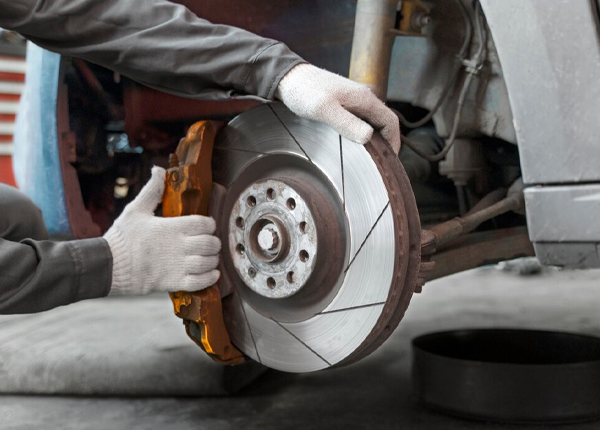How To Diagnose Your Headlight Problem: Everything You Need To Know
Your car’s headlights are not built with complex technology, but they can fail in a number of ways. Therefore, once you notice that your headlight has failed, you need to diagnose the problem in order to know the type of failure you are facing.
This article will explain how to diagnose headlight issues to help you track down and fix the root cause. The diagnostic process you will follow depends on the root cause of the failure. With that said, it’s essential to start by looking at the type of fault you have. Does the high beam still work? Are both lights still working? But first, let’s start with a briefing on the most common headlight problems.
Most common headlight problems
As suggested above, the headlights are not built with complex technology. With this in mind, your common problems lie with electrical problems or with the bulbs themselves. You should write down the type of problems you found for a more direct diagnosis so you know exactly how to track it down.
The most common headlight problems you will likely encounter are the following;
- A headlight does not work. This usually means you have a burnt out light bulb. Headlight bulbs usually fail one by one, which explains why you should check your bulbs every time one fails. However, bad connectors or electrical issues may be to blame.
- Both headlights don’t work. This means either the bulbs are dead or you have power or grounding problems. Most of the time, both bulbs do not fail at the same time. So before blaming the bulbs, check the system for faulty modules, relays, fuses, and the wiring harness.
- A highlight outside, but the high beams work. Sometimes the low beams will work while the high beams won’t, or vice versa. It could mean you have a bad bulb, or that your high or low beam relay or switch is bad. If only one bulb doesn’t work on a low or high beam, the bulb is failing. Sometimes a bulb with high or low beam issues emanates from that light switch or relay.
- The headlights work, but they are dim. In this case, the car likely has charging issues, worn bulbs, or fogged lenses. If your headlights are constantly dim, you probably have bad bulbs or fogged lenses. But if your headlights seem dim in certain situations, charging issues are likely to blame.
- Other problems are caused by relay or wiring problems, faulty switches, and faulty light bulbs.
How to diagnose and fix problems with headlights?
Most vehicle headlights have three main system components that work in harmony. These include the headlight bulbs, the fuse (this protects the bulbs from being damaged by a power surge), and the wiring harness (this transmits electrical flow to the headlight bulbs). The wire harness includes the wires and connectors.
Therefore, diagnostic and repair procedures revolve around these areas. First, let’s see how to diagnose headlight problems in simplified steps.
Step 1 – Check which bulb works
Open the car and turn on the headlights. Check which of the headlights is working. Remember to switch your headlights between high and low beam to ensure that the problem does not occur when you turn your headlights on a certain beam. After that, open the hood and proceed to the next step.
Step 2: Check the wiring harness
With the hood open, unclip the negative battery cable and remove it from the battery terminal. Next, trace the wiring harness at the back of the headlight and disconnect it. Finally, inspect and make sure the wiring harness contacts are clean. Look for corrosion and discoloration and clean as necessary.
If the top layer of the bulb or connector is corroded, clean it properly. Spread dielectric grease on the surface before reconnecting to prevent connectors from rusting in the near future. Then reconnect the disconnected battery cable and turn the headlights on if this doesn’t fix the underlying problem, go to the next step.
Step 3 – Replace dead bulbs
If step one above shows that one of your bulbs is not working properly, your best bet is to replace the faulty bulb and see if that resolves the issue. Go to the next step if this doesn’t fix the underlying issues.
Step 4: Inspect the fuse
Open the fuse box in the engine compartment and locate the fuse that controls the headlight circuits and see if the fuse is working properly. If you can’t find the fuse in the engine compartment, check the fuse box in the cab under the steering wheel. Follow the diagram on the fuse box cover to identify the fuse responsible for the headlights.
I posted an article explaining what a blown 40 amp fuse looks like. Check out that article for what a blown fuse looks like to aid in your inspection.
Step 5 – Test the Wiring Harness
Common causes are described and covered in the following: diagnostic process and procedures for problems with headlights. However, if none of the above solutions can resolve the issue, you may have wiring harness issues.
To test the wire harness:
- Disconnect the harness from the faulty headlight.
- Take a voltmeter and connect the black probe to the negative battery terminal.
- Connect the red probe to the positive wire on the headlight wiring harness.
There should be an electrical current coming from the positive wiring harness. If there is no electrical current traveling through the lines, visually inspect the wiring leads back to the fuse box. If you find any broken, open, or shorted wires, fix them. That should solve the underlying problem.
Frequently Asked Questions – Frequently Asked Questions
Q: What is the most common reason for headlights to fail?
I have outlined the various causes of headlight failure; however, the most common causes are dead light bulbs and blown fuses. Other causes are problems with faulty switches and relays or problems with the wiring harness. A bad switch can cause both low beam headlights to stop working. It can also cause both high beam headlights to malfunction.
Q: Is it better to restore the headlights or buy new ones?
Buying new headlights is better than restoring old headlights. Here’s why I said it; Restorations take care of lens cleaning while new headlights replace the entire unit. Every part of your headlights comes new, which means a brighter view and no need to buy a new set of bulbs. However, if you are on a budget right now, you may choose to refurbish your lamps instead of buying a new one. But restoring the headlights cannot be a permanent solution to such a crucial problem.
Q: How do you find a short in the headlights?
An electrical short is a low resistance connection between two conductors that transmit electrical energy to a circuit. For example, an electrical short occurs when there is a dimmer switch, headlight switch, headlight relay, or wiring fault.
The best way to find a short in the headlight is to test the headlights with a light tester and see if it transmits light. After that, visually inspect the wires for frayed, damaged, or burned areas. Repair damage as necessary to resolve outstanding issues.
Q: Is it easy to fix a headlight?
Replacing a headlight is easy. Most light emitting diodes (LEDs) and high intensity discharge halogens (HIDs) are easy to replace. All you need to do is remove the clips holding the headlight and disconnect the dead bulb from the socket. Then install the new bulbs and fasten the headlight with the clips that hold it in place.
Q: Can AutoZone replace my headlight?
Since Autozone houses several auto replacement parts, it’s safe to ask if they can fix headlight problems with a Honda CRV or any make of car. There is no direct answer to this question. But first, you need to understand that Autozone is not an auto shop. They specialize in selling auto parts.
They can provide you with the correct bulbs for your headlights and also give you instructions on how to replace them. However, Autozone can also help you replace your headlights if it doesn’t involve removing other car components.
to finish
I have outlined the common causes of headlight failure and how to diagnose headlight problems. The easiest way to spot if you have a dead bulb is to remove the non-functioning bulb and replace it with the working one. If the bulb lights up, you know you have a dead bulb that needs to be replaced.
The diagnostic and repair procedure is simple. However, you should take precautionary measures once you find that the root cause is from the wiring harness. If you don’t trust your gut, have an experienced technician rectify the problems to avoid frying the wires.



